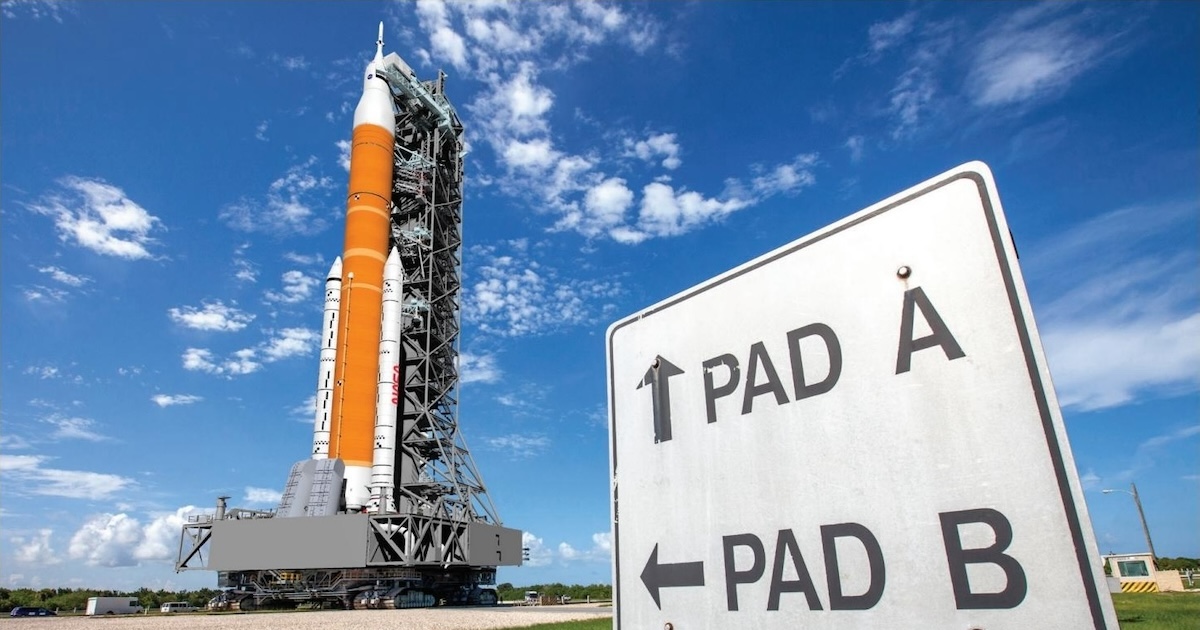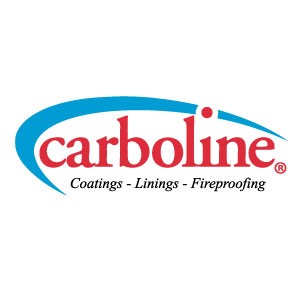When the astronauts of NASA's Artemis III space mission launch in 2026, the world will stand still and watch as one of humanity's great stories is written in real time.
The first crewed lunar landing since Apollo 17 in 1972 will also be the end of an era: It will be the last time astronauts leave Earth in the Block 1 Space Launch System (SLS).
 Photo courtesy of NASA
Photo courtesy of NASA
Bigger and more powerful Block 1B and Block 2 SLSs will carry missions starting with Artemis IV. That mission marks the beginning of construction of "Gateway," the first deep-space outpost of its kind. Before its crew lands on the moon some time in 2028, they will put the first module of the new space station into lunar orbit.
But before that project begins, crews must complete a construction project underway right now in 2024. That's why we're watching the fabrication, assembly, and protective coating of NASA's ML-2 launcher so closely.
We’ve been here before.
Unbeatable corrosion protection from Carbozinc 11 and Armorlast I
In layman's terms, the ML-2 launcher is the big tower that supports the rocket and its payload during assembly, preparation, transit to the launch pad, and liftoff. Once complete, it will stand 377 feet tall and weigh 12.9 million pounds.
NASA is spending big to build ML-2, so they chose a resinous coating system they know from past experience will protect their investment against corrosion in this humid coastal region.
Carbozinc 11 HS is an ultra-low VOC variant of the same inorganic zinc-rich primer technology that has protected structural steel in the VAB since 1966. It imparts excellent galvanic protection in the humid coastal environment to which it is exposed, and also features low-temperature curing down to 15°F (-9°C).
That's followed by Armorlast I, an inorganic finish coat that further enhances corrosion protection. Its inorganic composition imparts superior weatherability and good resistance to high temperatures.
A secondary and often overlooked benefit of inorganic systems is that, though they do eventually break down, the byproducts of their degradation consist of inert particles rather than microplastics.
The Carbozinc and Armorlast system represents most of the volume of paint required for this project, but other Carboline products in a wide range of colors also were specified for logos, insignias, safety markings, and other needs:
- • Carboguard 893 epoxy primer and intermediate coat offers excellent corrosion protection, good abrasion resistance, and complies with current AIM VOC regulations.
- • Carbomastic 15 aluminum-pigmented epoxy mastic has a long history of excellent barrier protection, including over minimally prepared surfaces.
- • Carbothane 133 LH polyurethane finish features outstanding performance in aggressive environments with very low HAPs content.
- • Carbothane 134 HG polyurethane finish has high-gloss characteristics and exceptional weathering, corrosion, abrasion, and chemical resistance.
- • Carboxane 2000 siloxane finish is applied over a compatible primer and provides exceptional weathering and outstanding color and gloss retention. It completes a two-coat system that meets or exceeds the performance of a traditional three-coat system.
- • Carbocrylic 3359 MC single-component water-based acrylic is a versatile interior/exterior coating with excellent color and gloss retention.
Comparing inorganic zinc coatings against galvanizing and metallizing
Painting ML-2's structural steel is not the only way to protect it from corrosion.
Other methods, like hot-dip galvanizing or thermal spray metallizing, have grown in popularity in recent years. This growth has spurred debate over which method is best in light of engineers' and builders' push for corrosion protection that can last the lifetime of an asset—usually 50 years.
Actually, "best" is too vague to be helpful. Proponents of each method can furnish testing to demonstrate strong performance. But we know that galvanizing is a bit more expensive than resinous coatings on a per-square-foot basis. And we know that metallizing can be far more expensive; it also is more time-consuming and there is risk of incomplete coverage over complex geometries.
So anyone's lofty suggestion of a 50-year service life for corrosion protection is purely marketing. We wouldn't claim it, and no one should: No industry-accepted standard testing method evaluates 50-year performance for paint, galvanizing, or metallizing.
Presently, the only way to evaluate 50-year performance is to wait 50 years.
Coating choreography
On larger construction projects such as ML-2, the way corrosion protection is installed can matter just as much as material selection. When wisely chosen, it can create cost savings and compress construction schedules.
In some cases, applying coatings in the field makes the most sense. In others, it is more sensible to coat as much square footage as possible in the shop prior to shipment. Each project's individual circumstances drive that decision.
ML-2 is unique in that coating application is ongoing in three separate locations:
- • Steel fabricator Paxton & Vierling Steel's shop in Carter Lake, Iowa
- • PK Industrial's coating facility in Augusta, Kansas
- • A temporary PK Industrial "shop" at Kennedy Space Center
It seems complicated, but this divide-and-conquer method was the right call to keep construction on track. For our part, it is essential that our team ensures the right amounts of the right products are manufactured consistently and arrive promptly to Iowa, Kansas, and Florida. An error here would cause costly delays.
Another countdown
Carboline's role in decades of NASA space missions has been modest but meaningful. It's the kind of working relationship we like best: A meeting of strong minds who exchange deeply technical information aimed at solving unique challenges.
Artemis IV is still years away from launching, but it's no time to relax. This isn't just a coatings project. We know what's at stake. And we know from experience how it feels to watch years of hard work pay off when the countdown hits zero, and to see our name in a footnote to a story like this one.
That never gets old.

